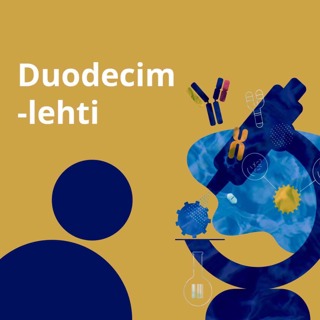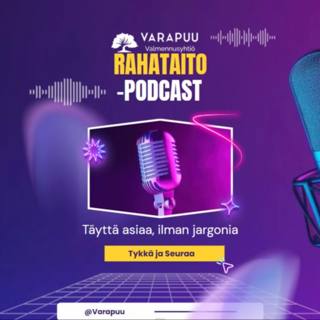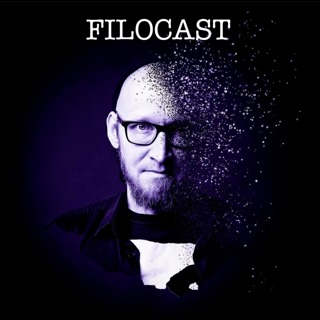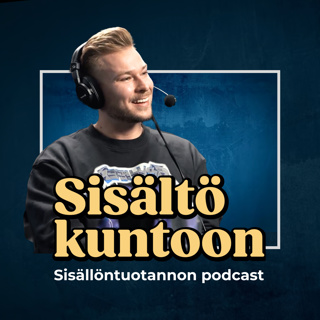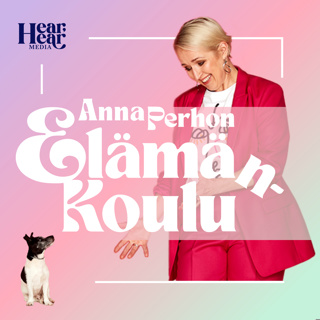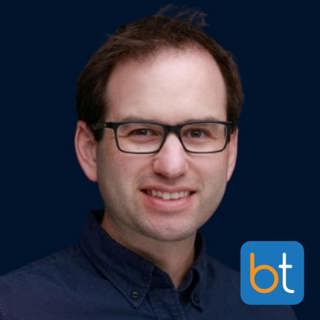
Ep. 559 Dosimetry University V: Case Review on Dose Optimization Strategies with Dr. Tyler Sandow and Dr. Zach Berman
The balance between targeting tumor and sparing healthy liver is delicate. How do the experts do it? In this case-based review, Drs. Zach Berman (UC San Diego) and Tyler Sandow (Ochsner Health) join host Dr. Kavi Krishnasamy to walk us through real-world scenarios and share how they approach Y90 dose optimization. --- This podcast is supported by: Sirtexhttps://www.sirtex.com/ Medtronic Emprinthttps://www.medtronic.com/emprint --- SYNPOSIS First, the doctors review a case of HCC and discuss key lab values, like albumin, and their role in planning. They also break down how they manipulate variables like microsphere activity, perfusion density, and total dose to deliver a tumor dose of around 1,100 Gy. The doctors also challenge the standard perfused dose of 400 Gy for large tumors and share when they feel comfortable pushing beyond it. Next, they discuss nuances in treating portal vein tumor invasion and what decides which Vp classifications can be treated with Y90 or combination immunotherapy. A subsequent case involving a large central HCC tumor explores the risks of biliary stricture from high radiation and the challenge of missing tumor margins with overly selective catheterization. In the last case, the doctors discuss different scenarios in multifocal HCC liver lesions. Overall, the conversation explores different approaches based on tumor size, location, and patient liver function, and highlights the importance of multidisciplinary collaboration in optimizing patient outcomes. --- TIMESTAMPS 00:00 - Introduction and Case Overview01:28 - Patient Case Study - Hep C and Alcoholic Cirrhosis02:05 - Evaluating Liver Function and Treatment Approach04:50 - Tumor Dose and Perfusion Density15:49 - Portal Vein Tumor Invasion21:42 - Case Study: Large Central HCC Tumor Treatment22:19 - Challenges in Treating Large Central Tumors22:48 - Dosimetry Considerations and Biliary Strictures27:24 - Case Study: Assorted Multifocal HCC Lesions Scenarios
22 Heinä 38min

Ep. 558 Advancements in Stroke Thrombectomy: Techniques & Training with Dr. Blaise Baxter and Dr. James Milburn
Are your current stroke interventions in line with the latest clinical data? Dr. Blaise Baxter, interventional radiologist at Sutter Health, and Dr. Jim Milburn, interventional neuroradiologist at the Ochsner Health, join host Dr. Michael Barraza to discuss the latest advancements in stroke interventions. --- This podcast is supported by: Imperative Carehttps://imperativecare.com/stroke/zoom-stroke-solution/ --- SYNPOSIS The episode begins with a discussion on the different pathways to becoming a neurointerventionalist, emphasizing why interventional radiologists are uniquely equipped for this transition. They dive into cutting-edge stroke interventions, sharing key takeaways from major trials on large core and medium vessel occlusions. Dr. Baxter and Dr. Milburn highlight the HERMES trial, which showed that endovascular thrombectomy led to beneficial effects on patients with anterior circulation occlusion. They then cover the BAOCHE trial, which showed better functional outcomes with thrombectomy over medical therapy. Milburn and Baxter also share their perspectives on the shifting role of perfusion imaging and why the field may be moving beyond it. To close the discussion, the doctors underscore the powerful impact of rehabilitation in driving patient recovery, and stress the ongoing need for innovation and improved training in the field of neurointerventional radiology. --- TIMESTAMPS 00:00 - Introduction06:18 - Training and Certification in Neurointervention13:11- Large Core Trials and Their Impact19:42 - CT Perfusion and Treatment Decisions29:45 - Understanding Stroke Scale Scores and ICAD30:31 - Thrombectomy Trials and Treatment Strategies34:48 - Challenges in Randomizing Patients for Trials44:25 - Advancements in Robotics and Stroke Treatment51:37 - Future Directions in Stroke Rehabilitation53:11 - Global Thrombectomy Adoption and Training --- RESOURCES Hermes trial: Goyal M, Menon BK, van Zwam WH, et al. Endovascular thrombectomy after large-vessel ischaemic stroke: a meta-analysis of individual patient data from five randomised trials. Lancet. 2016;387(10029):1723-1731. doi:10.1016/S0140-6736(16)00163-X BAOCH trial: Jovin TG, Li C, Wu L, et al. Trial of Thrombectomy 6 to 24 Hours after Stroke Due to Basilar-Artery Occlusion. N Engl J Med. 2022;387(15):1373-1384. doi:10.1056/NEJMoa2207576
18 Heinä 58min
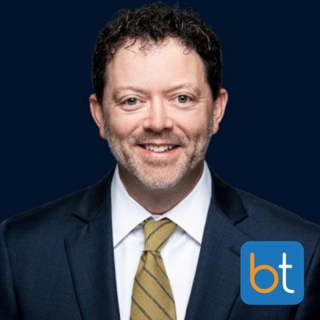
Ep. 557 Proving Your Worth to the Hospital: Economics of Hospital Based IR with Dr. Matt Hawkins
How can interventional radiologists turn their unique capabilities into revenue? Dr. Matt Hawkins, interventional radiologist and Health Policy and Economics councilor at the Society of Interventional Radiology (SIR), joins host Dr. Ally Baheti to discuss how interventional radiologists can prove (and get paid for) the value that they bring to hospitals. --- This podcast is supported by: Medtronic Emprinthttps://www.medtronic.com/emprint RADPAD® Radiation Protectionhttps://www.radpad.com/ --- SYNPOSIS The doctors discuss key physician reimbursement models, including the Hospital Outpatient Prospective Payment System (HOPPS) for hospital outpatient and Diagnosis-Related Groups (DRGs) for hospital inpatient, as well as strategies for negotiating subsidies. Dr. Hawkins covers key strategies for proving the value of IR to hospitals, emphasizing the importance of moving beyond work RVUs and focusing on the technical revenue generated for hospitals. The discussion underscores the critical role that IR plays in trauma, transplant, and cancer care. Lastly, Dr. Hawkins highlights SIR’s economic initiative emphasizing the importance of accurate documentation and coding in order to turn our clinical impact into measurable value. --- TIMESTAMPS 00:00 - Introduction01:58 - Understanding Professional and Technical Reimbursement04:49 - Hospital Reimbursement Structures07:59 - Quantifying Value and Negotiating Contracts15:55 - Economic Arguments for IR in Trauma, Transplant, and Cancer23:01 - The Importance of IR Leadership in Mixed IRDR Groups25:13 - Challenges and Strategies for Independent IR Practices28:41 - Maximizing Revenue Through Evaluation and Management (E&M)36:40 - Navigating Coding and Documentation for Better Negotiation38:54 - Financial Literacy and Business Strategies
15 Heinä 42min
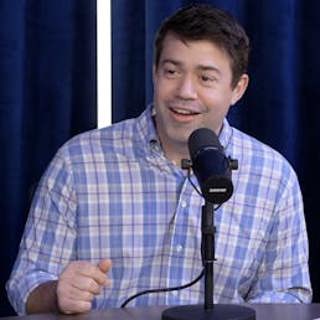
Ep. 556 Dosimetry University IV: Optimizing Radiation Segmentectomy with Dr. Nima Kokabi and Dr. Tyler Sandow
Radiation segmentectomy: who, when, how? Interventional oncologists Dr. Nima Kokabi, Dr. Tyler Sandow, and Dr. Kavi Krishnasamy continue their in-studio discussion on all things Y90 in Part 4 of Dosimetry University, focusing on specific applications of radiation segmentectomy. --- This podcast is supported by: Sirtexhttps://www.sirtex.com/ Medtronic Emprinthttps://www.medtronic.com/emprint --- SYNPOSIS This session kicks off with a discussion on the curative potential of Y90, comparing it to other curative modalities like resection. The doctors discuss the importance of achieving a complete pathological necrosis (CPN) with Y90 for better survival outcomes, especially in the context of liver transplantation. The conversation also covers personalized approaches for treating liver-dominant metastatic cancers using Y90, and strategic considerations when choosing between techniques like radiation lobectomy, thermal ablation, and chemoembolization. The interventional oncologists explore the viability of radiation segmentectomy in treating small lesions and discuss data supporting its efficacy. Real-world clinical cases are examined to highlight the practical application of these therapies, their impact on overall survival, and the intricacies of dosimetry and patient selection. --- TIMESTAMPS 00:00 - Introduction01:07 - Ablative Y90 Curative Outcomes and Survival Rates02:16 - Radiation Segmentectomy vs. Ablation09:22 - Case Study: Metastatic Colorectal Cancer18:06 - Tumor Distinction on Cone Beam CT19:58 - Case Study: 77-Year-Old Female with Breast and Colorectal Cancer21:09 - Challenges and Techniques in Selective Radiation Segmentectomy24:28 - Avastin and Y9028:16 - Case Study: 53-Year-Old Male with Metastatic Colorectal Cancer29:40 - Radiation Lobectomy and Hypertrophy Strategies32:37 - Approaches for Metastatic and HCC Patients
8 Heinä 36min

Ep. 555 Dosimetry University Part III: Optimizing Single-Session Treatments with Dr. Nima Kokabi and Dr. Tyler Sandow
Will single session Y90 become the standard of care for HCC and oligo-metastatic disease? Tune in to our third installment of Dosimetry University with interventional oncologists Drs. Tyler Sandow, Nima Kokabi, and Kavi Krishnasamy as they share their experiences and best practices in single session Y90 treatment. --- This podcast is supported by: Sirtexhttps://www.sirtex.com/ Medtronic Emprinthttps://www.medtronic.com/emprint --- SYNPOSIS The doctors discuss the application and workflow of single session Y90 therapy for primary and oligo-metastatic liver tumors. They discuss the latest data from various institutions, emphasizing reduced lung dose, lower time to treatment, improved cost-efficiency, and the advantageous safety profile associated with single session treatment. The discussion also covers ideal patient selection based on tumor location and vascular characteristics, the importance of cone beam CT, and how to identify red-flag features of vascular enhancement. Our panel then reviews key technical considerations for single session success, including the use of flow-modifying microcatheters, gelfoam, and strategies for flow redirection. The episode concludes with a case discussion to explore the best strategy for a large liver tumor, detailing the specifics of each treatment and the potential role of combined therapies to achieve better long-term outcomes. --- TIMESTAMPS 00:00 - Introduction 00:47 - Single Session Y90: Workflow and Benefits03:52 - Patient Selection04:31 - Tumor Location and Preferred Techniques14:31 - Reperfusion and Redirection Techniques 26:16 - Case Study: Large Tumor Treatment37:01 - Long-Term Outcomes and Surgical Considerations
1 Heinä 51min

Ep. 554 Optimizing the IR/DR Curriculum and Experience with Dr. Gregg Khodorov and Dr. Nicole Lamparello
So you’re going to be an IR resident–what exactly did you sign up for? Find out with Dr. Neil Jain, an integrated IR resident at Georgetown as he hosts a discussion on optimizing integrated IR residency programs with Dr. Nicole Lamparello, an Assistant Professor of Clinical Radiology at Weill Cornell Medicine, and Dr. Gregg Khodorov, a PGY-5 resident at Thomas Jefferson University Hospital. The conversation covers a comprehensive range of topics, including optimal rotation schedules, early IR exposure, consult services, and the benefits of structured clinics. --- This podcast is supported by:Medtronic Emprinthttps://www.medtronic.com/emprint --- SYNPOSIS The doctors first discuss the nuances of choosing a surgical, medicine, or transitional intern year, and the electives that best prepare junior trainees for a career in IR. They then discuss the optimal balance between diagnostic and interventional training in DR years, and the best way to keep junior trainees involved in IR throughout their residency. The conversation moves on to the different structures of the consult service at each of the speakers’ programs and what this means for training quality and patient care. The doctors then break down what the last year of IR residency looks like, and the residents detail what they would like to see in order to prepare best for attending life. They explore exposure to private practice, subspecialty clinic, and elective time; sharing innovative practices from their own institutions and emphasizing the importance of mentorship, integration, and resident retention. The episode also addresses the challenges and potential solutions for resident attrition within the integrated IR residency track. --- TIMESTAMPS 0:00 - Host Introductions3:34 - PGY1: Medicine, Surgery or Transitional Intern Year?15:41 - PGY2-PGY4: Diagnostic Radiology Years24:46 - IR Clinic Training Throughout IR/DR Curriculum27:49 - IR Consult Service Structure38:23 - PGY5: Credentialing in Nuclear Medicine and Mammography43:58 - PGY6: Preparing for Attending Life53:00 - Minimizing Attrition Rate
27 Kesä 1h 5min

Ep. 553 Dosimetry University Part II: Understanding Partition and Voxel-Based Approaches with Dr. Tyler Sandow and Dr. Nima Kokabi
BSA, MIRD, or voxel-based dosimetry? Join us for part 2 of Dosimetry University where interventional oncologists Dr. Tyler Sandow, Dr. Nima Kokabi, and Dr. Kavi Krishnasamy explore and debate the critical nuances of a successful Y90 procedure, covering dosing methods, lung shunt management, and when to incorporate other therapeutic approaches. --- This podcast is supported by: Sirtexhttps://www.sirtex.com/ Medtronic Emprinthttps://www.medtronic.com/emprint --- SYNPOSIS The episode begins with a discussion on methodologies for calculating lung shunt fractions using planar imaging versus SPECT CT. The physicians highlight the implications of various dosimetry models, including BSA (Body Surface Area), MIRD (Medical Internal Radiation Dose), and voxel-based dosimetry for determining prescribed activity. Drawing on their clinical experience, they address the management of high lung shunt fraction cases and the application of therapeutic strategies like TACE (Transarterial Chemoembolization) and SBRT (Stereotactic Body Radiotherapy). The conversation also covers the roles of cryoablation and microwave ablation in treating centrally located lesions. The episode concludes with a case study emphasizing the importance of individualized dosimetry planning. --- TIMESTAMPS 00:00 - Introduction01:05 - Lung Shunt Calculation Methods06:42 - BSA, MIRD, and Voxel-Based Dosimetry16:03 - High Lung Shunt Management30:02 - Case Study: Liver Tumor Treatment34:10 - Cryo vs Microwave: A Safer Option?35:42 - Y-90 Procedure: Imaging and Techniques43:35 - Dosimetry and Dose Calculations51:10 - Post-Treatment Analysis and Outcomes57:51 - Transplant Considerations and Aggressive Treatments58:18 - Conclusion and Final Thoughts
24 Kesä 1h 1min

Ep. 552 Dosimetry University Part I: Treatment Planning with Dr. Tyler Sandow and Dr. Nima Kokabi
Dosimetry University is now in session! First up—how do you plan your Y90 treatments and what can you do in the planning phase to maximize efficacy? Find out in Part I of BackTable’s Dosimetry University series featuring interventional oncologists Dr. Nima Kokabi from the University of North Carolina Chapel Hill and Dr. Tyler Sandow from Ochsner Health. This episode is hosted by Dr. Kavi Krishnasamy and recorded live in the BackTable studio. --- This podcast is supported by: Sirtexhttps://www.sirtex.com/ Sponsor This podcast is supported by: Medtronic Emprinthttps://www.medtronic.com/emprint --- SYNPOSIS The doctors first discuss the structure of their Y90 service lines, including the impact of multidisciplinary tumor boards and clinics on time to treatment for liver cancer patients. They then talk through their technical preferences—whether to use glass or resin, preferred dosimetry guidelines and apps, and the dosimetry softwares that they use in treatment planning. The doctors also discuss the utility of the T2N ratio, advanced imaging like cone beam CT, and angiographic targeting software—emphasizing how these tools can help achieve the delicate balance of preserving normal tissue while treating as much tumor as possible. This episode also highlights the importance of collaboration between academic and private practices to optimize patient care and treatment outcomes. --- TIMESTAMPS 00:00 - Introduction and Overview02:21 - Multidisciplinary Clinics and Tumor Boards13:12 - Dosimetry Guidelines and Practices27:46 - Nuances in Tumor Dosage and Segmentectomy32:00 - Angiographic Targeting Software33:18 - Cone Beam CT Techniques48:33 - Anesthesia, Access, and Catheters
17 Kesä 55min











